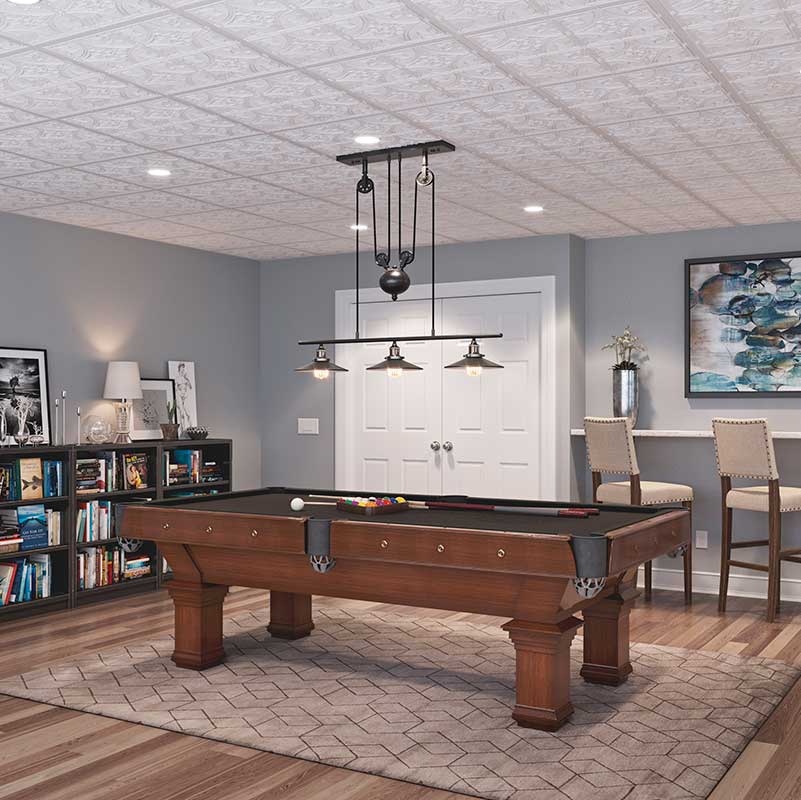Unfinished, dark, damp basements. These are spaces in which nobody wants to spend time. Many homeowners are searching for a solution to these dark, unappealing areas. Even if yours is cold concrete and storage boxes, it’s likely that your basement has tons of potential!
If your basement has unfinished concrete or concrete block walls, you may need a contractor unless you have advanced DIY skills. The basic procedure is:
- Plan and layout walls and rooms
- Check and repair water leaks and humidity problems
- Plan and install plumbing and electrical
- Build insulated basement walls
- Cover floor joists with your ceiling choice
- Install your preferred flooring
- Furnish and enjoy!
We have over 30 years contracting experience with a specialization in ceilings.
Here are 9 simple DIY basement ceiling projects:
Painted Sheetrock
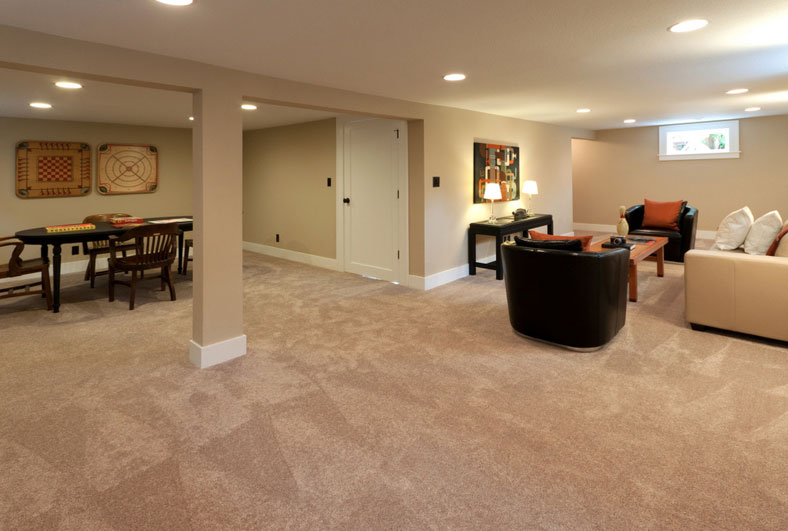
A painted sheetrock ceiling might be the perfect way to give your basement a finished look – especially if your basement has high ceilings. If you already have a drywall ceiling in your basement, painting it is the easiest and most cost-effective way to complete your downstairs living space. Read this article for information on how to hang a drywall ceiling. For paint color ideas, visit our Painted Ceiling DIY Project Gallery.
Barn Board
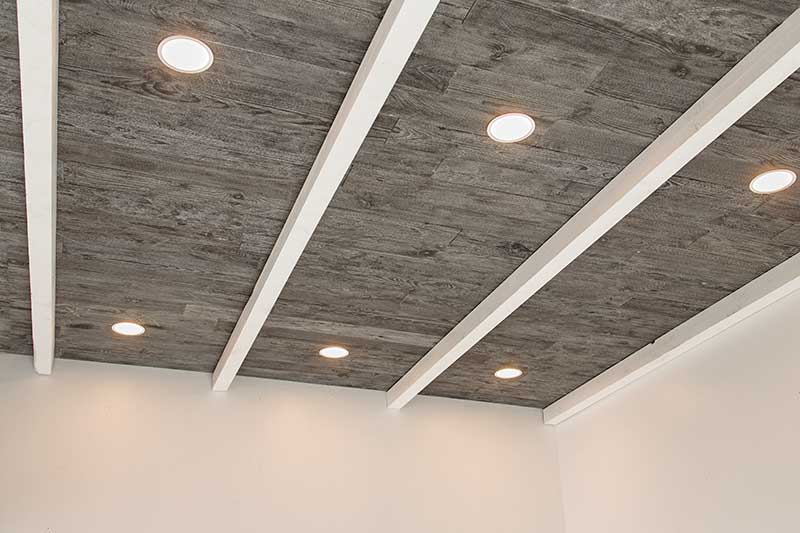
Whether on existing drywall or between beams, installing barn board planks on your basement ceiling will instantly create a warm and inviting environment. Made from reclaimed wood, with each piece as unique as its source, it’s a bit more pricy than other ceiling options. Read more about barn board options here.
Mineral Board
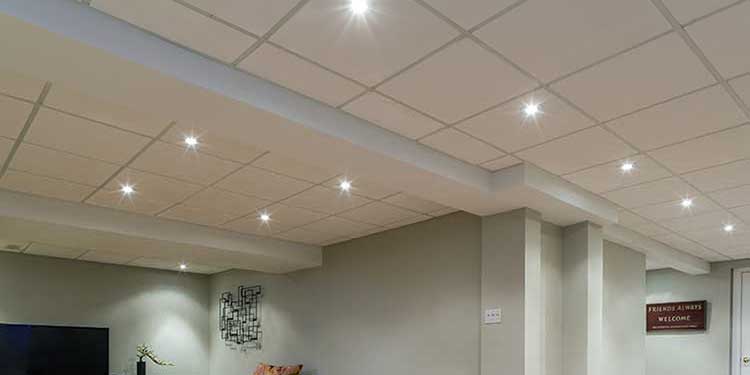
Mineral board ceiling tiles are an affordable way to complete a basement ceiling if an existing grid system is already in place. The costs increase, however, when they need to be replaced if damaged by water. Unfortunately, the risk of water damage is increased in basements due to the plumbing housed above it.
White Lay-In Ceiling Tiles
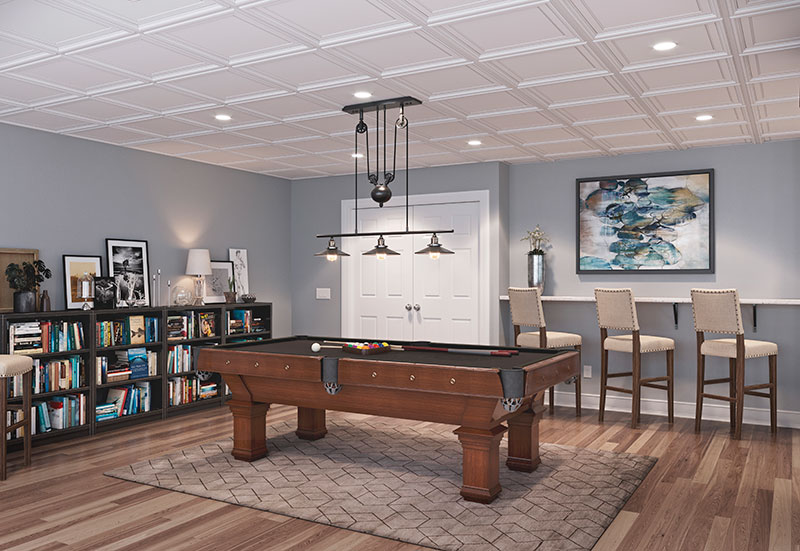
Performance vinyl ceilings differ from mineral board in that they provide special protection against mold and mildew, which tend to form in basement areas. Performance Vinyl ceiling tiles are also a relatively economical choice, coming in at less than $3 a square foot.
For information on ceiling grid systems see installation guide.
Black Lay-In Ceiling Tiles

Contrary to conventional wisdom, a black ceiling will appear higher than it actually is, as well as give any space an industrial feel. Choosing a coffered tile will add a touch of elegance to complete the effect. Genesis Performance Vinyl ceiling tiles are an especially great choice to install in a ceiling basement grid system since they’re impervious to mold, mildew and water damage. For installation information, see installation guide.
Faux Tin
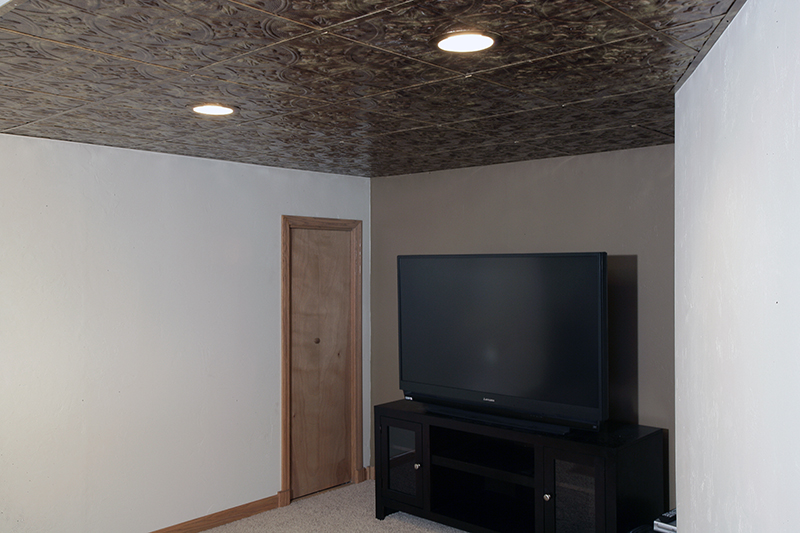
Made of durable vinyl and available in a wide variety of finishes and patterns, faux tin ceiling tiles are a great way to add charm and character to any basement. Fasade’s faux tin ceiling tiles can be installed in an existing grid system, or applied to a smooth ceiling or prepared surface such as OSB. For more information, please see installation instructions. More information on Fasade faux tin ceiling tiles can be found here.
Real Tin
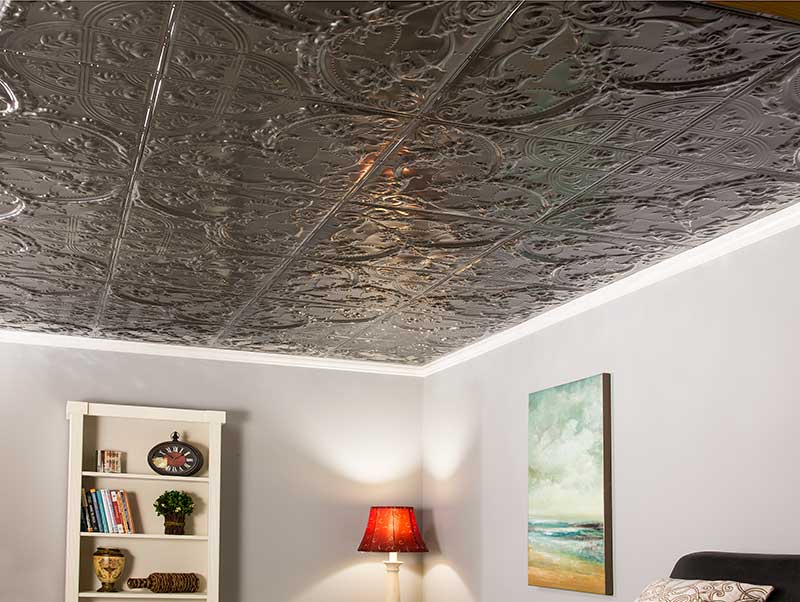
Although tin ceilings may look luxurious and expensive, they’re a fairly economical way to transform your basement ceiling. Part of what makes real tin an attractive alternative is that it’s so DIY friendly! Great Lakes Tin ceiling products are available in nail up and lay-in styles and are easily applied with nails, screws or glue. See installation instructions.
Fabric
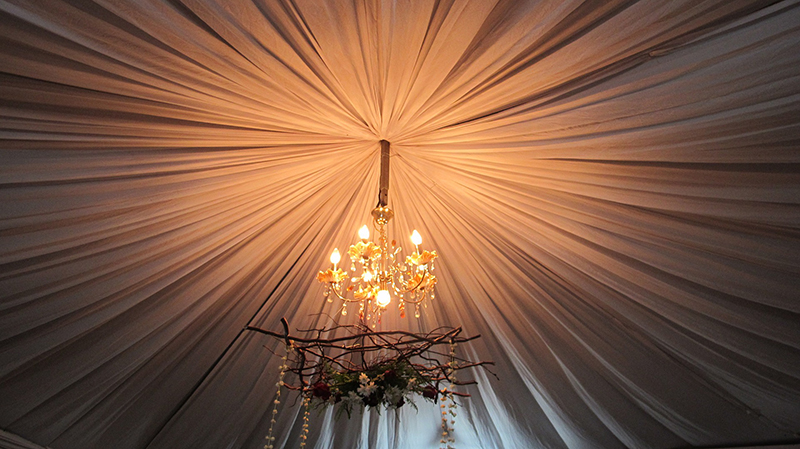
Decking out your basement ceiling with fabric can add intrigue to an otherwise dull space. If applied properly, fabric can do a remarkable job of concealing plumbing and other unsightly fixtures situated in most basements. The key is choosing the right fabric to accomplish your desired look. Although less difficult to achieve than other ceiling methods, it’s helpful to have another person’s help along the way. For additional tips on creating a fabric ceiling, check out this article.
Grid Covers
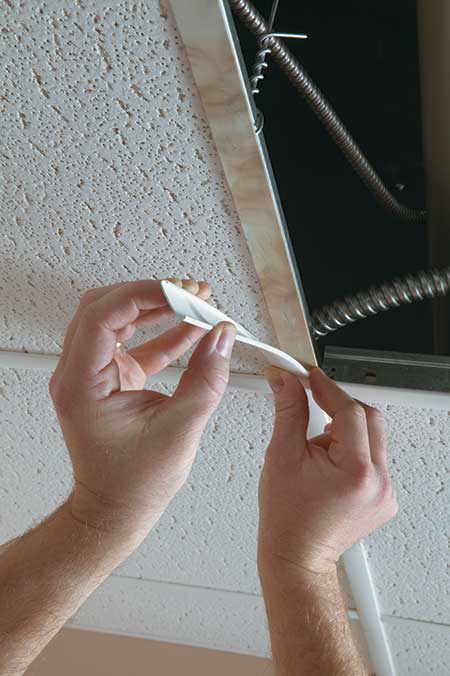

Metal suspended grid systems tend to rust over time – especially in damp areas like basements. Installing grid covers over an unattractive grid system will give your ceiling an instant facelift. Not only are grid covers a super simple project to undertake, but they’re quite inexpensive – pricing out to less than 50 cents a linear foot. See GridMAX Ceiling Grid Cover Installation Guide.


